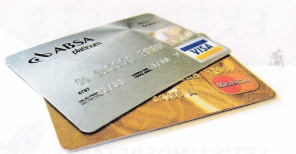What is the use of magnet?
Magnets have several uses:
- Credit cards, ATM cards, and identity cards have a strip of magnetic material that stores information.
- Television and computer monitors use magnets.
- Computer hard discs and audio and video cassettes have magnetic material that store information.
- Magnets are used in picking up substances made of iron from scrapyard.

USING A MAGNET TO FIND DIRECTIONS
Today, we use magnets for various purposes. In ancient times, the primary use of a magnet was to find directions.
If a magnet is allowed to move freely, it comes to rest in a direction very close to the Earth’s North-South direction. This property of a magnet was used to find directions on the surface of the Earth by travellers. An instrument with a magnet that is used to find directions is called magnetic compass.

It has a small magnetic needle at its centre. This needle can rotate freely and always points in the Earth’s North-South direction. Different directions (north, south, east, and west) are marked on the compass. Figure shows how one can find directions using a magnetic compass.
People also ask
- Who discovered the magnet?
- How does a magnet work?
- What are the Different Types of Magnets?
- Is an electromagnet a temporary or a permanent magnet?
- How does an electric bell work using electromagnets?
- What is the Magnetic Field?
- Factors Affecting the Magnitude of the Force on a Current-carrying Conductor
- What is magnetic force on a current carrying conductor?
- What factors affect the strength of an electromagnet?
- How does a current carrying conductor produces a magnetic field?
- What Is Magnetic Effect Of Electric Current?
- Oersted Experiment on Magnetic Effect of Current
- How do you Determine the Direction of the Magnetic Field?
- What is the Meaning of Magnetic Force?
Activity
Aim: To prove that a freely suspended magnet always aligns itself in a particular direction.
Materials needed: A ruler/wooden stick, a heavy book, a table, a bar magnet, a string, a magnetic compass, a sheet of white paper and adhesive tape.
Method:
- Stick the sheet of white paper on the table and place the magnetic compass on it.
Ensure that no magnet or magnetic object is kept near the compass. Mark the north and south directions on the paper. - Tie one end of the string to the middle portion of the bar magnet and the other end to the ruler/wooden stick.
- Place the ruler on the table so that the end tied to the magnet sticks out about 6-8 inches beyond the edge of the table. Place the book on the ruler so that it does not slip-off the table.
Make sure that the magnet can move freely. - Leave the magnet undisturbed for a little while and observe in which direction it comes to rest. Make a note of the direction. Compare this with the directions you have marked on the paper.
- Give the magnet a twist and observe again in which direction it comes to rest.
Observation: You will see that the magnet always comes to rest in a particular direction (north-south).
Conclusion: If a freely suspended magnet is allowed to rotate, it comes to rest such that its poles point in the Earth’s north-south direction.
